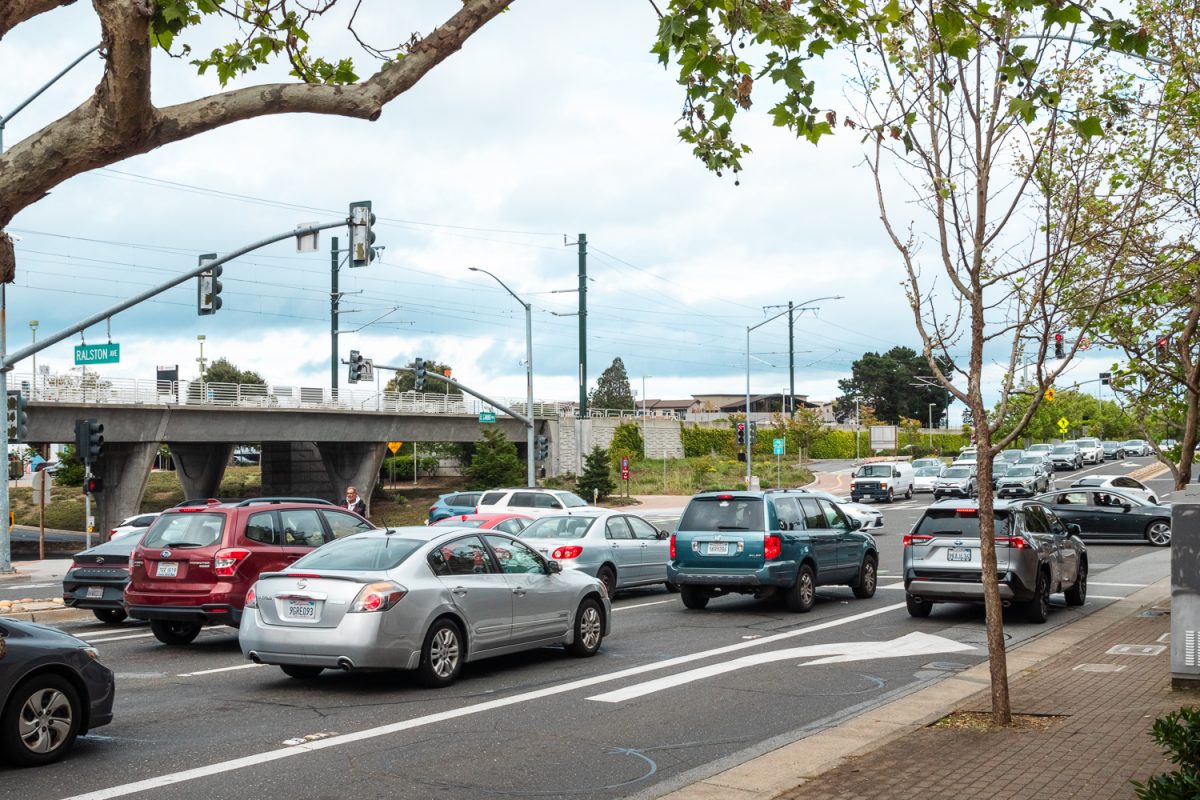Total traffic citations were issued over 9000 times in December 2014. However, nine years later, in 2023, the number plunged to just 336.
An analysis conducted by the San Francisco Municipal Transit Agency (SFMTA) reveals a decade-long trend of the downward spiraling amount of traffic citations, with a notable drop beginning in February 2023. Since then, the number of citations has plateaued at the hundreds’ lower end.
There are many speculated causes for this worrying decline, including the reductions in police staffing, the impacts of the pandemic, and policy changes.
“There’s been a big reduction in the police force in San Francisco for various reasons, so it’s understandable why traffic enforcement moves lower on the list of priorities. Policing traffic violations is highly workforce and time-intensive, and it would strain an already thin force that has to cover a large area,” said James Bohac, a physics teacher at Carlmont High School and a frequent visitor of the city.
According to Bohac, the reduction of law enforcement can be traced back to two leading causes. Primarily, the COVID-19 pandemic affected all aspects of society, leading to a shift in resource allocation and societal behaviors.
Bohac also cited a direct effort to downsize the police force following the abuses identified in the George Floyd police killing. Many individuals throughout the nation advocated defunding police to address the concerns raised by the movement regarding police accountability and social justice.
According to the 2023 staffing analysis of the San Francisco Police Department (SFPD), both sworn and civilian professional staff face significant staffing deficiencies. Since 2021, deficiencies have increased for both classifications, with sworn police officers experiencing a shortage of nearly 500 staff.
“Since around 2020, many agencies have had trouble retaining law enforcement personnel due to several factors. One of these factors is a lack of trust and support from the communities these law enforcement personnel have spent their lives protecting. Since there are fewer law enforcement personnel, more severe matters get priority, such as emergency calls for service, which may, in turn, lead to a lack of traffic citations,” said Gavin Clements, a senior at Carlmont High School who is currently in the process of receiving his license.
Another aspect possibly influencing the trend of traffic tickets lies in policy changes initiated by the San Francisco Police Commission. In response to concerns about the disproportionate targeting of individuals of color, the commission recently implemented controversial measures that restrict officers’ authority to conduct traffic stops for minor infringements.
“We can consider the factors where laws have changed, and so the city is reducing enforcement for more equitable reasons. However, the biggest factor is probably a combination of staffing shortages, the amount of intensive time needed for traffic monitoring, and the city putting their money where different protections are needed,” Bohac said.
In an attempt to reduce the risks of increased collisions due to unsafe driver behavior, the city will employ automated speed cameras next year on San Francisco’s busiest streets. These cameras are expected to assist the overstretched law enforcement and generate significant revenue for the city.
“Technological advancements in general, specifically automation, will improve traffic enforcement. In Taiwan, where I went last summer, speed cameras were everywhere on major highways, keeping people more aware of their speed. Automated cameras are everywhere in China too, and there, at least, traffic accidents are far less frequent than here in the U.S.,” said Brant Chung, a sophomore at Carlmont who recently received his permit.
In addition to technological solutions, some drivers have proposed redesigning roads with traffic calming measures. Given potential budget limitations, a combination of techniques such as speed cushioning, road narrowing, and the implementation of speed cameras could enable an alternative future for driver and pedestrian safety in San Francisco.
“When I went to San Francisco, many roads were poorly designed for cars, bikers, and people, or poorly maintained. Redesigning roads to make them easier for driving will go a long way, as well as implementing more automated systems for determining speeding on large roads or highways,” Chung said.
Echoing Chung’s sentiments, Clements emphasized road improvement to increase traffic safety in urban environments.
“Besides enforcement and education, engineering plays a massive part in traffic safety. People may not realize this, but roads can be engineered for specific purposes, and these designs can be modified to promote different driving behaviors,” Clements said.
One of the most readily implementable solutions is public education and awareness to promote driver safety. Education is the foundation for safe traffic practices.
“Public education and awareness is super important. When I took my Driver’s Ed course, I was thrown so many statistics regarding texting while driving, to the point where I’ve been far more cautious about even glancing at my phone while driving,” Chung said.












